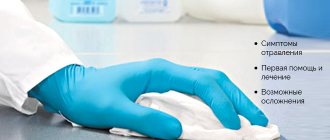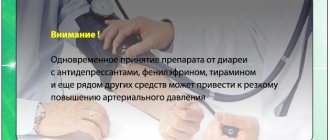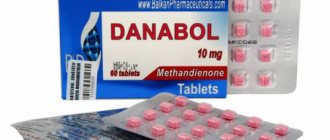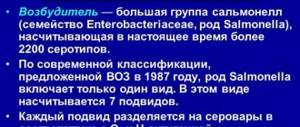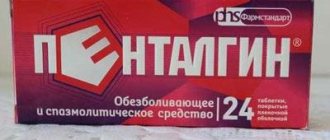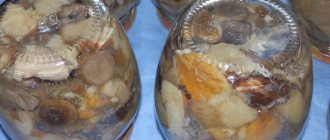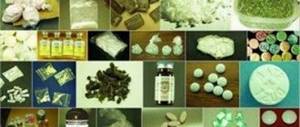Bile is a secretion produced by the liver, which helps digest food, improves and stimulates the functioning of the gastrointestinal tract. Bile poisoning can cause you to feel an intense bitter taste in your mouth because when the bile ducts become clogged, it begins to spread throughout the body.
Its smell is pungent and unpleasant, and the color can vary depending on the chemical composition and the number of components - bilirubin, biliverdin.
What contributes to the production of secretion:
- Saturation of liver cells with useful microelements - vitamins, electrolytes, glucose;
- Movement of lipids to liver cells;
- Absorption of moisture by the gallbladder.
Stagnation of bile: what is it?
Cholestasis manifests itself in a decrease in the flow of bile into the duodenum. This problem can be caused by dysfunction of the gallbladder, pathology of the bile ducts, impaired synthesis of bile components, cirrhosis, malnutrition, parasitic infection, various disorders in the nervous and endocrine systems, or other reasons, but in any case, the liver is the first to suffer from stagnation of bile.
Disturbances in the functioning of this important organ, which is also responsible for digestion and cleansing of the body, will immediately affect your overall well-being. Patients begin to feel constant fatigue, weakness and lethargy.
Also symptoms of cholestasis are:
- icteric discoloration of the skin, whites of the eyes and visible mucous membranes;
- itchy skin, especially severe on the arms and legs;
- pain in the right hypochondrium;
- periodic nausea and even vomiting;
- bad breath;
- dark urine and light feces;
- increase in liver size.
Stagnation of bile entails disruption of the coordinated functioning of the entire digestive system. Cholestasis can also lead to diseases such as:
- cirrhosis of the liver;
- liver failure;
- vitamin deficiency and osteoporosis, as a result of a lack of vitamins A and D, the absorption of which is hampered by the disease;
- cholecystitis.
Stagnation of bile in the gallbladder is caused by too long breaks between meals. Consequently, frequently ignoring breakfast, lunch or dinner can automatically put you in line for an appointment with a hepatologist-gastroenterologist.
There may also be people nearby who are not particularly keen on physical exercise and lead a sedentary lifestyle. Also at risk for cholestasis are alcoholics, people suffering from problems with the digestive tract, and patients with stones in the bile ducts.
Sometimes changes in hormonal levels in pregnant women can affect the functioning of the gallbladder and cause cholestasis. Typically, problems with bile flow appear in the third trimester of pregnancy. Cholestasis is dangerous both for the child and for the mother carrying him.
Treatment of cholestasis is carried out simultaneously in several directions:
- itching relief;
- fight against bile stagnation;
- support and healing of the liver.
During treatment and recovery, a patient with cholestasis is prescribed a diet that removes foods based on or containing animal fats from the diet, sour and fried foods are limited, and the consumption of alcohol and drugs that have a toxic effect on the liver is prohibited. Cold drinks and foods, canned food, chocolate, cocoa, and mushrooms are also excluded.
In the absence of contraindications, the doctor may prescribe a blind tube to the patient, which flushes the bile ducts and eliminates bile stagnation.
In particularly severe cases, your doctor may recommend surgery to widen the bile ducts. The operation is performed endoscopically through several punctures, which allows the patient to recover fairly quickly from the treatment, and also eliminates the need for stitches.
People's approach
15-20 minutes before meals, it is recommended to drink a cup of hot vitamin infusion from gooseberries, currants, lingonberries, cranberries, viburnum, rose hips or hawthorn. Berries can be brewed together or alternated. These tasty and healthy drinks will help relieve spasms in the digestive tract and prepare it for a meal.
The normal functioning of the gatekeepers, which regulate the flow of bile, will be helped by products containing silicon and germanium - they can be distinguished by their bright garlicky smell. This includes garlic itself, wild garlic, as well as asafoetida, an oriental spice from the plant of the same name.
Problems with bile flow have long been treated in folk medicine with herbal teas taken after meals. Bitter choleretic herbs and berries are preferred: gentian, knotweed, wormwood, tansy, immortelle, oregano, milk thistle, chicory, St. John's wort, dandelion roots and leaves, Oregon grape roots, red rowan and many others.
It is worth noting that many of the healing decoctions and infusions not only normalize the flow of bile, but also heal the liver, help it recover, help remove toxins from the liver and cleanse the blood.
In oriental medicine, for the treatment and prevention of bile stagnation, the herb, mumiyo, ginger, mountain arnica, and aloe juice are recommended.
Symptoms of bile in the blood
The clinical picture of the presence of bile in the blood is manifested by many syndromes.
Cholemia syndrome
Bile acids irritate nerve endings, causing the skin to itch. Spreading through the bloodstream, acids pass through the blood-brain barrier and enter the central nervous system. Bile intoxication causes hallucinations, delusional disorder, stunned consciousness, and convulsive seizures. In severe cases, cholemia leads to a coma.
Cardiovascular activity is disrupted: the number of heart beats per minute decreases, blood pressure decreases, and the muscular wall of the heart weakens. The functioning of the respiratory system is disrupted: patients feel a lack of air, the respiratory rhythm is disrupted.
The entry of bile into the blood disrupts the functions of the latter. Bile acids destroy blood cells. Red blood cells are broken down, anemic syndrome develops, and blood clotting is impaired. Body temperature rises to 42 0 C. All of the above symptoms are a sign of intoxication with bile components - bile acids.
Jaundice
Bile contains a pigment - bilirubin. An increase in the latter in the blood develops true jaundice syndrome (there is also false jaundice, which appears when eating red and yellow vegetables, most often carrots and pumpkin).
The basis of the symptoms of jaundice is the yellow coloration of the skin, sclera and visible mucous membranes. The degree of color change depends on the amount of bilirubin in the blood: skin color can vary from pale yellow to orange. Urine takes on the color of dark beer. Usually, a change in urine color precedes a change in skin color. Only tears, saliva and gastric juice do not change color.
However, the clinical picture is less dangerous compared to long-term complications. Accumulated bile acids and pigments over time impair the detoxification function of the liver. Ammonia, phenol, acetate, indole, skatole and acetaldehyde accumulate in the blood. Endotoxemia syndrome develops - a pathological condition of the body in which the functioning of all organs is disrupted due to the accumulation of endogenous toxins in the blood. This is a critical condition for human life, since the body can no longer independently compensate for the deviations caused by toxins.
Intoxication leads to liver dysfunction. Hepatic-renal syndrome develops. It is manifested by a rapid decline in kidney function: daily diuresis (amount of urine) decreases. The level of potassium and sodium in the blood increases. Long-term effects of bile in the blood:
Hepatic encephalopathy
This term refers to any organic damage to the brain due to the accumulation of metabolic products and bile acids in the blood due to a violation of the antitoxic function of the liver. Hepatic encephalopathy manifests itself as neurological and mental disorders.
Consciousness is impaired according to the stem type. Patients are drowsy, lethargic, and stunned. Patients answer questions with a delay. In severe cases, a coma is observed. The emotional sphere is disturbed: patients become irritable, it is difficult for them to control their affect. The cognitive sphere is impaired: intelligence decreases, attention is scattered, and memory capacity decreases.
The structure of hepatic encephalopathy includes the following syndromes:
- Neurasthenic. Characterized by weakness and irritability. Patients have increased sensitivity to light, smell and sounds. They Patients are exhausted, lethargic, and quickly get tired of simple activities.
- Senestopathic-hypochondriacal syndrome. Patients note an unpleasant sensation in the body of an unexplained localization. Thus, there are complaints of a burning sensation in the back of the head and intermittent pulsation in the hands. The hypochondriacal component of the syndrome implies that patients complain of an incurable disease.
- Depressive syndrome. Patients experience decreased mood, motivation to perform, and physical activity.
- Psychoorganic syndrome. It is characterized by the Walter-Bühel triad: decreased memory, decreased intelligence and inability to control emotions. In the clinical picture of psychoorganic syndrome, confabulations are also observed, when false memories arise in the patient’s memory or their chronological order is disturbed.
Prevention of bile stagnation
According to statistics, a fifth of the population of our planet suffers from cholestasis. Fast foods, lack of diet and sedentary work, frequent worries and stress - all this can cause the disease.
There are many different ways to stimulate the gallbladder, thereby preventing bile stagnation:
- move - daily walks, running, swimming pool, dancing classes and other types of physical education will not allow bile to stagnate;
- be sure to spend time on breakfast, lunch and dinner, so as not to waste it later on trips to the hepatologist;
- eat less fatty, sweet, salty and spicy foods, give up alcohol;
- try not to overeat, even healthy food should be in moderation;
- hot temper and irritability can provoke spasms in the gallbladder, do not get angry in vain and control yourself.
Characteristics of bile
The odor of bile has a characteristic, pronounced aroma. The secret tastes bitter. But there is no exact description for color. In some cases, the bile has a yellowish tint, and in some patients there is a greenish or even brownish tint. According to experts, the difference lies in the concentration of bilirubin and biliverdin.
The formation of concentration is influenced by several factors, which are expressed in the following features:
- Hormones, as well as glucose, water, electrolytes and vitamins. During the active-passive stage, they move through the cells, as well as the space remaining between them.
- Fatty acids during active transport.
- Water and organic, mineral substances that were in the gall bladder.
The accumulation of secretion occurs in the liver - bile ducts. During active digestion, bile is transported from the gallbladder directly to the duodenum. There, fats are emulsified and the action of pepsin is eliminated, which is made possible by the action of acids and enzymes.
Treatment, symptoms, drugs
Bile in the intestines ensures the normal functioning of the digestive system. However, the amount of secretion must correspond to the volume of incoming food. Bile should flow into the intestines after food enters there. The secret itself must have a certain concentration and composition. Any disturbances in the synthesis of bile and its evacuation into the intestinal lumen lead to disruptions in the functioning of the gastrointestinal tract. Knowing the symptoms of pathologies will help you take the necessary measures in a timely manner and prevent the development of complications.
The mechanism of bile entering the intestines
Bile is produced by liver cells called hepatocytes. After the secretion is saturated with acids and additional substances necessary for digesting food, it enters the gallbladder through the ducts.
Secretion is produced continuously, but it is removed from the bladder only when necessary. Thus, the bile plays the role of storing liver “juice” until food arrives.
Therapeutic measures
If a person vomits blood, the reasons can only be identified by specialists in a hospital setting.
After identifying the factor that provoked the pathological condition, doctors begin treating the patient:
- Drip infusion of special solutions through a vein is indicated.
- If there is severe blood loss, a transfusion is given.
- If necessary, oxygen is supplied to the patient.
- Treatment measures are carried out aimed at stabilizing the patient's condition.
- The consequences of dehydration are eliminated by introducing special solutions, for example, “Regidron”.
- Shock is being prevented.
- The functionality of important internal organs is normalized.
As soon as the patient’s condition is stabilized, specialists will begin to examine the affected organ that provoked the pathological condition. To do this, the intestines and stomach are freed from contents. An endoscope is used to examine the digestive tract, identify the source of bleeding and determine its intensity.
The role of bile in the digestive process
The role of bile is diverse.
The main functions of the secret include:
- Impact on fats, their preparation for further breakdown and absorption.
- Creating conditions for the absorption of fat-soluble vitamins.
- Reducing the acidity of stomach contents entering the duodenum. This prevents aggressive effects on the walls of the organ.
- Antibacterial effect. Bile inactivates pathogenic microorganisms that penetrate the intestines and prevents the development of inflammatory processes.
- Activation of intestinal contractility.
In addition to the listed functions, bile also promotes the removal of metabolic products, toxic substances, drugs, hormones, and cholesterol. Liver secretions activate enzymes needed to digest food.
Bile is the only possible “transport” for removing cholesterol from the body.
Consequences of a lack of bile in the intestines
Insufficient supply of secretions may be due to congestion in the gallbladder, liver, or disturbances in the formation of digestive juice by hepatocytes.
The following reasons for the lack of secretions associated with diseases of the bladder and bile ducts can be identified:
- gallbladder dyskinesia;
- bend of an organ;
- inflammatory diseases of the bladder and bile ducts;
- blockage or compression of the ducts by stones, tumor-like and cystic formations;
- dysfunction of the sphincters.
Also, disturbances in the flow of bile into the intestinal lumen occur due to insufficient formation of secretions due to damage to liver cells:
- primary biliary or alcoholic cirrhosis;
- parasites;
- infections;
- as a result of exposure to toxic substances or medications;
- malignant tumors, cysts, metastases.
Failures in the hormonal regulation of digestive processes also cause disturbances in the evacuation of secretions.
Insufficient flow of bile into the intestines poses a danger to human health, namely:
- Disturbances occur in the digestion of food, in particular fats. Digestive enzymes are not activated. Undigested fats enter the blood and disrupt the transformation of glucose into glycogen, which increases the likelihood of developing diabetes.
- Excess cholesterol is not eliminated from the body, which contributes to the deposition of cholesterol plaques on the walls of blood vessels and the development of atherosclerosis.
- The absorption of fat-soluble vitamins (A, E, D, K) is impaired. Due to a lack of vitamin A, so-called night blindness develops, that is, blurred vision at dusk. A deficiency of compound D causes softening of bone tissue due to decreased mineralization. Vitamin K deficiency leads to decreased blood clotting and increases the risk of bleeding. A lack of vitamin E leads to disorders in the reproductive system and the development of anemia.
- Since bile reduces the acidity of gastric contents when they enter the intestines, if there is a lack of secretion, the risk of inflammatory diseases increases. Ascites may develop as a result of acidification of the environment. This is an accumulation of fluid in the abdominal cavity.
- Pathogenic microorganisms begin to predominate in the intestines. The condition is called dysbiosis.
Due to insufficient absorption of lipids necessary for the synthesis of hormones, hormonal disorders also occur when liver secretions enter the intestine in a small amount.
What substances enter the blood along with bile?
It is quite natural that substances that are part of it enter the blood with bile.
And the composition of bile includes:
- bilirubin
- cholesterol
- bile acids
These are the three main substances contained in bile.
Normally, all these substances are present in the blood, but in strictly defined quantities that are not dangerous to the body. But when bile enters the blood, the amount of these substances in the blood increases sharply and becomes life-threatening.
Consequences of excess secretion
A large release of bile into the intestines can occur with excessive secretion formation.
Increased production of liver “juice” can be observed with the following ailments:
- damage to liver cells, for example, hepatitis;
- gallbladder diseases;
- food poisoning;
- excessive alcohol consumption, when active formation of bile begins to neutralize toxins.
The main sign of excess bile in the intestines is its appearance in the stool. Normally, secretion in the stool is allowed in newborns. The feces may turn bright yellow or dark green or even black. After 3 months of age, this is not the norm. Excess bile in the intestines is often accompanied by diarrhea, otherwise called hologenic diarrhea.
It may occur:
- with deformations of the bladder wall;
- due to gallstone disease;
- with a decrease in muscle contractility of the bile duct;
- due to Crohn's disease (chronic inflammation of the intestines).
Additionally, nausea may occur, leading to vomiting containing bile in the masses.
The presence of liver secretions in the intestinal contents can also be explained by dysbiosis. Due to the lack of microorganisms necessary to convert bile, it begins to come out unprocessed, simultaneously burning the intestinal walls.
In most cases, dysbiosis is caused by taking antibiotics.
Causes of bloody vomiting
There are many reasons for blood getting into vomit, and almost all of them are dangerous to humans.
In addition to such not very dangerous reasons as swallowing blood after tooth extraction or during a nosebleed, bloody vomiting occurs for the following reasons:
Ulcerative lesions of the stomach and intestines. Such vomiting is preceded by a very strong attack of nausea.
Acute gastritis. Blood inclusions are usually minor and can be caused by alcohol intake.
Varicose veins of the stomach walls, the most dangerous is the dark color of the blood released along with vomiting;
Side effects of drugs that have a destructive effect on the gastric mucosa (NSAIDs, steroid hormones);
Stomach cancer. The vomiting is debilitating, does not stop for a long time, the secreted mass has a putrid odor.
Liver cirrhosis, chronic hepatitis. A complication of these diseases is varicose veins of the esophagus, when tense vessels with a thinned wall are susceptible to any mechanical stress and are often injured by rough food.
Liver damage. With this injury, bloody vomiting is mixed with bile; this condition is extremely life-threatening and can be fatal.
Perforated ulcer. This condition is often triggered by taking a large dose of alcohol, is accompanied by a copious amount of scarlet color, and is extremely life-threatening.
Mallory-Weiss syndrome. Severe cough, physical activity, prolonged vomiting (for example, in case of poisoning) provoke an increase in pressure in the stomach and the formation of bleeding cracks. They cause light bleeding and vomiting with blood clots.
In addition, vomiting blood can be caused by a traumatic brain injury that causes profuse nosebleeds. Pregnant women suffering from late toxicosis of pregnancy occasionally experience vomiting of blood. This is a sign of preeclampsia, a condition that is extremely dangerous for the health of mother and child. Associated symptoms are swelling of the arms and legs, nausea, increased blood pressure, and weakness. Pathology requires immediate hospitalization.
Read also: Come up with a caption for the picture
Causes of bile flow disorders
There are many reasons that can affect the normal flow of bile. Disturbances can be associated with diseases of the liver, gall bladder, and disruptions in neurohumoral regulation. However, more often the reason lies in the influence of unfavorable factors.
These include:
- The digestive system is negatively affected by eating spicy, fried, canned, and fatty foods.
- Long intervals between meals, the habit of eating at night and overeating also lead to failures.
- Long-term fasting is another risk factor for the development of problems in the biliary system.
- Excessive exercise after eating. They lead to disturbances in the functioning of the sphincters.
- Daily afternoon nap in the afternoon.
- Alcohol abuse.
These factors reduce the tone of the digestive tract and lead to the reflux of bile into the stomach.
This is accompanied by:
- a feeling of bitterness in the mouth;
- burning pain in the epigastric region;
- heaviness in the stomach;
- belching;
- constant heartburn;
- bloating;
- attacks of vomiting mixed with bile;
- the appearance of a yellow coating on the tongue.
Rejection of liver secretions requires the use of timely measures to eliminate the pathology. Bile entering the stomach causes irritation of the mucous membrane of its walls. With a long course of the disease, gastritis occurs, followed by the formation of ulcers. In advanced stages, the development of perforating ulcers and the occurrence of malignant neoplasms are likely.
If signs of bile reflux into the stomach appear, you should seek help from a gastroenterologist. Timely treatment will allow you to quickly get rid of unfavorable symptoms and prevent the occurrence of complications.
First aid and treatment methods
To confirm the diagnosis, a thorough examination is carried out. Diagnostics includes general blood and urine tests, ultrasound examination of the digestive system. If necessary, the substance is collected for analysis in the laboratory.
If signs of bile poisoning appear, doctors are called and first aid is provided to the victim.
First aid steps;
- Give the patient medications to eliminate spasmodic manifestations.
- They provoke vomiting if a person experiences deterioration after taking the pills.
- The victim is not allowed to eat or drink choleretic drugs.
Further treatment of overdose is carried out by medical professionals. There are two types of therapy: conservative and surgical.
In the first type, treatment is aimed at stimulating urinary function and using antibacterial drugs. Certain medications are prescribed:
- Increasing the amount of bile - Allohol, Flacumin.
- To eliminate spasm in the bile ducts - Drotaverine, No-Shpa, Amylophylline.
- To normalize bladder function - Choleritin, Sorbitol, magnesium sulfate.
Medicines are prescribed by the doctor depending on the patient’s condition. Self-treatment for bile poisoning is strictly prohibited. The surgical method of therapy includes two stages:
- Cleansing. Carry out using drainage or probing.
- Delete. Prescribed for persistent relapses of the disease. If radical surgery is not possible, then artificial duct implants are installed.
Surgical intervention in case of poisoning is carried out strictly according to indications: the presence of stones in the ducts, rupture of the gallbladder, various formations.
After treatment, much attention is paid to proper nutrition. Fatty, fried, baked goods, and sweets are removed from the diet. Limit the consumption of alcoholic beverages.
Diagnosis of pathologies
When making a diagnosis, the doctor is guided by the patient’s complaints.
To clarify the diagnosis and exclude other possible pathologies, additional examination methods are prescribed:
- Laboratory diagnostics (examination of feces, urine, biochemical blood test and general clinical analysis). The caprogram should reveal a high content of bile acids, indicating an excess of liver secretion in the intestines. Feces may also be discolored and contain stercobelin. This already indicates an insufficient supply of bile.
Treatment Options
Treatment tactics are largely determined by the reasons that caused disturbances in the release of bile:
- For dysbacteriosis and inflammatory diseases, antibiotic therapy is prescribed in combination with bifidobacteria, probiotics and prebiotics to restore normal microflora.
- For cholelithiasis, ursodeoxycholic acid is prescribed to dissolve and remove stones. In parallel, the drugs improve the composition of bile.
- If disturbances occur due to food poisoning, it is recommended to drink large amounts of water slightly colored with potassium permanganate. You should seek medical help.
- When bile refluxes into the intestines, therapeutic measures are primarily aimed at eliminating the causes of the disease. In order to protect the walls of the stomach from exposure to an aggressive environment, antacids and proton pump inhibitors are prescribed. Also, to improve the movement of the bolus of food through the intestines and prevent its reverse reflux, prokinetics are prescribed that improve intestinal contractility.
- For liver diseases, hepatoprotectors are selected.
- For pathologies of the gallbladder, drugs that improve the motility of the organ, choleretic drugs, can be prescribed.
For prolonged diarrhea, enterosorbents are prescribed.
In case of disturbances in the release of bile into the intestines, traditional methods of therapy are also widely used. They must be agreed upon with the attending physician.
In case of disturbances in the release of bile into the intestines, the selection of medications is carried out by a gastroenterologist. Self-medication can aggravate the situation and cause complications.
Lack of bile in the body is a condition caused by its insufficient production by the natural forces of the body, as well as by stagnant processes.
The ancient Greeks believed that people who were full of this fluid had a bilious character. In fact, everything happens exactly the opposite: excessive nervousness, along with other causative factors, provokes a violation of its outflow.
As for the external manifestations of this condition, which were first discovered by doctors of those times, they have survived to this day and will be discussed further.
Video: Help with Eastern Medicine
Read further:
Surgical instruments. Scalpels, surgical knives and their varieties
Excess magnesium in the body - symptoms in adults and children
Are electronic cigarettes harmful to health - what to choose: regular or vapes?
Drotaverine overdose (poisoning) - lethal dosage
Ways to eliminate swelling after mosquito bites
Article rating:
Share with friends:
You may also be interested in:
Causes of fainting during poisoning
What injections are given in case of poisoning?
Occupational poisoning (intoxication) - types, symptoms and treatment
Classification of food poisoning: prevention and first aid
general information
When the food entering the body contains a small amount of protein (animal and plant origin), the production of bile occurs in extremely small quantities.
As a result, the digestion of fats occurs only partially, which suppresses their unhindered absorption.
Part of the fat that has not had time to be digested quickly reacts with certain forms of iron and calcium, which leads to the formation of insoluble “soap”.
Thus, none of the substances can get into the blood, which needs them, and the resulting “soap” makes the consistency of stool harder and leads to constipation.
The lion's share of solid fats that enter the body with food can quickly melt at body temperature (36.6 C). If there is an insufficient amount of bile, the resulting fat begins to envelop food pieces, preventing mixing between proteins, carbohydrates and enzymes.
In addition to this, an insufficient amount of bile acids leads to obstacles in the absorption of carotene, vitamins, and a certain part of fats.
People suffering from bile deficiency often have such a significant deficiency of vitamin A that it becomes difficult for them to drive at night or perform other work that requires increased concentration.
In conditions of undigested food, a huge number of bacteria multiply, which release histamine and gases. They are the ones who create general discomfort, malaise, form bad breath and fetid feces.
Part of the digested food is lost during bowel movements, which is a serious problem when there is a need for calories and a lack of protein elements to restore the body. In medicine, to alleviate the condition, it is recommended to use a low-fat diet.
When does intoxication occur?
Bile poisoning is a fairly common phenomenon. For humans, such intoxication poses a mortal danger. The fact is that when such a secret enters the bloodstream, the body is poisoned quite quickly. If such a victim is not provided with qualified assistance in a timely manner, this could result in death.
Poisoning occurs due to the fact that the secretion cannot get where it needs to go along the usual route. The reason lies in an obstacle that blocks the transport of bile through the ducts. The primary source for this is:
A flow of bile that encounters an obstacle in its path or “bumps into” a narrowed lumen of the duct becomes a catalyst for increased pressure. After this, the duct wall breaks through, which ensures that the secretion enters the blood. All this leads to the fact that bile components spread through the blood and become the cause of obstructive jaundice.
The picture ends with the fact that a number of organs will suffer significantly:
- Heart muscle, since the frequency of its contractions will decrease significantly.
- Blood vessels, which causes a decrease in blood pressure.
- Brain. There is a wide range of consequences here, ranging from a banal feeling of fatigue and irritability for no reason to headaches. Additionally, bile intoxication manifests itself in a change in the biological clock, which guarantees insomnia at night and drowsiness during the daytime. In particularly advanced cases, the central nervous system is damaged, which leads to coma.
- Walls of blood vessels. When they are destroyed, bile enters nearby tissues. Because of this, inflammation occurs, followed by rapid development of the necrological process, which indicates death.
- Erythrocytes, leukocytes. This negative effect consists of inhibition of blood clotting and the risk of subsequent bleeding.
For successful treatment, medical intervention will be required no later than three weeks after the body malfunctions. Otherwise, the person faces coma and even death.
Reasons for violation
Frustration, anger, aggression - all this leads to a spasm in the sphincter region of the gallbladder. As a result, the full “circulation” of bile is disrupted. This entails insufficient production, outflow, and stagnation.
A long break between meals also leads to the occurrence of these symptoms. Bile stagnates, thickens, provokes the formation of stones and does not fulfill its natural tasks, which leads to its shortage in those systems in which it is needed.
As a result, bile fluid does not enter the ducts and duodenum.
All this can only mean that shortages and stagnant processes cannot arise on their own.
As a rule, they are influenced by several factors:
- insufficiently active lifestyle;
- lack of a planned and established diet;
- progression of metabolic processes (diabetes, excess weight);
- abuse of alcoholic beverages and tobacco;
- consumption of black coffee in large quantities;
- gluttony with spicy, fatty, heavy foods;
- the presence of endocrine pathologies in the body;
- the presence of hormonal changes during pregnancy, menopause, puberty;
- pathologies of the biliary tract, gallbladder;
- stone formation;
- congenital developmental anomalies in the area of internal organs;
- diseases of the liver, pancreas, gastrointestinal tract;
- infectious processes and phenomena;
- intoxication;
- taking certain groups of medications;
- CNS disorders.
The scale of the list fully explains why the condition when bile stagnates or is not produced in sufficient quantities is the most common.
What causes disturbances
Problems that disrupt digestion often occur in children, let alone adults.
Passion for “therapeutic cleansing”, fasting, constant positioning in one position, uncontrolled use of medications - all this creates conditions for disruption of the functioning of this organ, which is responsible for the formation of bile and its functioning.
How do these substances act on the body?
- The most dangerous thing for the body is bile acids that enter the blood. They affect the brain, and this first causes severe fatigue, irritability, drowsiness during the day and insomnia at night, and headaches. Then, their continued effect on the central nervous system leads to severe apathy and, ultimately, coma.
- The effect on the heart and blood vessels leads to a drop in pressure and a sharp decrease in heart rate.
- Once in the blood, bile acids cause the breakdown of blood cells: red blood cells and white blood cells. The blood's ability to clot sharply decreases. This means that the risk of bleeding increases sharply.
- The walls of the blood vessels themselves are also affected, which leads to bile components entering the tissues of various organs, leading to their inflammation and death (necrosis). Vital organs are affected: brain, liver, kidneys, heart.
Manifestation of the disease
There are plenty of signs of illness. The gallbladder in our body is a small pear-shaped sac located between the lobes of the liver.
It is this that is the reservoir for a special liquid – bile. Through the duct, it is transferred from the bladder, liver to the small intestine.
When foods containing fat are at the stage of leaving the stomach, hormones begin to act so that the gallbladder is emptied due to vigorous contraction of the muscle walls, and the liver produces bile at an accelerated rate.
Rapid emptying of the gallbladder can be caused by the intake of large amounts of food rich in vitamins (in particular, B), certain minerals and trace elements.
Despite the fact that bile includes a limited list of chemical elements:
It is of great importance for human health. For example, water helps the better functioning of all internal systems during the digestion process.
Lecithin ensures the breakdown of fat particles into small droplets, which are subsequently influenced by enzymes that promote rapid digestion and absorption.
Bile acids are needed to ensure that necessary substances are transported into the blood fluid through the intestinal walls - carotene, digested fats, vitamins of groups A, D, E, K.
In the early stages, it is difficult to identify a condition associated with a lack of bile. And if any signs appear, they are most often attributed to ailments of other organs.
Pain in the right hypochondrium can indicate problems with the liver, bad breath - food that begins to rot in the stomach, increased fatigue can be a witness to absolutely any condition.
Based on the place where bile stagnates and the part of the body where it is lacking, the signs of bile deficiency in the body may differ from each other.
You have questions?
You can ask them to me here, or to the doctor by filling out the form you see below.
Bile is a multicomponent liquid produced by liver cells (hepatocytes). It is directly involved in the digestive processes. Bile is present in the blood in the form of secondary acids. In various pathologies, their increased content or excess of bile pigments is detected.
Symptoms
If there is a lack of this fluid in the biliary tract and in the bladder itself, the following symptoms occur:
- unbearable pain in the right side;
- gag reflex, nausea;
- flatulence, heartburn;
- apathy, indifferent behavior;
- bitterness in the mouth and unpleasant aftertaste;
- loss of appetite;
- belching with a “rotten egg” smell;
- problems with stool;
- the color of the stool is not dark enough;
- state of chronic fatigue, general lethargy, drowsiness;
- dark urine;
- problems with the absorption of vitamins, which leads to a state of vitamin deficiency;
- osteoporosis (fragility of all bone structures);
- spasmodic pain on the left.
In an advanced state, jaundice, a sallow or pale skin tone, and yellowing of the whites of the eyes appear.
If the disease progresses and there is no therapy for a long time, there is a possibility of complications in the form of anemia, spontaneous fractures, poor bowel movements and clogging of the body with waste and toxins.
In what cases does poisoning occur?
Bile poisoning occurs frequently. In the absence of qualified help and adequate treatment, it becomes severe, threatening not only health, but also life.
How does this happen? The main reason is obstruction of the bile ducts. They can become clogged due to foreign organisms or internal anomalies:
- Cysts;
- Tumors;
- Enlarged lymph nodes;
- Gallstone disease.
The liver continues to produce secretion, it continues to flow, accumulates, as before, the body tries to remove it with the help of the bile ducts. A large accumulation of bile increases the pressure in the bile ducts, it grows until they burst and all the secretion begins to spread throughout the body through the blood and vessels.
Poisoning the body with bile leads to the development of jaundice and negatively affects the functioning of the following organs:
- The cardiovascular system. Heart rate slows down, blood pressure decreases;
- Brain. They suffer from attacks of headaches, irritability, nervousness, a person’s rhythm of rest/activity changes (he stays awake at night, cannot sleep during the day), fatigue sets in, and performance decreases. Ultimately, everything can end in coma if the central nervous system is damaged;
- The vessels become inflamed and begin to die;
- The consistency of the blood is disrupted, and the risk of bleeding increases several times.
Diagnostics
If the symptomatic complex indicates a lack of bile, as well as its stagnation in the stomach, gall bladder, and liver, the following diagnostic measures are traditionally prescribed:
- biochemical analysis of blood fluid;
- testing for the presence of antibodies to determine a parasitic type infection;
- ultrasound examination, x-ray measures in the gallbladder area;
- probing to collect bile matter;
- examination of the organs due to the diseases of which this condition arose.
Many people are afraid of swallowing a tube and begin the process of self-therapy with choleretic drugs. These measures are prohibited, since they will not only not lead to the desired effect, but will also aggravate the general condition.
Preventive measures for poisoning
Doctors say that there is simply no better prevention than following a healthy lifestyle in its various manifestations. A person is required not only to carry out physical activity, but also to correctly build his own diet.
The main advice on this matter is standard measures. For example, the benefits of daily walking have already been proven many times. What will add to the effectiveness of this measure is that the person will choose a route away from busy roads in order to breathe truly fresh air.
In addition, experts say that you should give up alcoholic beverages and the habit of smoking. It is also recommended, if possible, to avoid situations that lead to stress and disrupt a calm psychological environment.
Bile is a multicomponent liquid produced by liver cells (hepatocytes). It is directly involved in the digestive processes. Bile is present in the blood in the form of secondary acids. In various pathologies, their increased content or excess of bile pigments is detected.
Therapy
After identifying the causative factors that caused the lesion, the treating specialist prescribes treatment aimed at eliminating the underlying disease.
Medicines
Removing the inflammatory process in the area of damaged organs requires taking antibiotic compounds. After this, the following groups of medications are prescribed:
- means intended to enhance the secretion of bile fluid, the most common compositions include ALLOCHOL, OXAFENAMIDE, mineral waters;
- in order to relieve spasm from the bile ducts, the following medicinal compositions are used: PAPAVERINE, BELADONNA extract, AMYLOPHYLLINE;
- to improve the contractions of the gallbladder, the medicine CHOLERITHIN, magnesium sulfate, drugs based on barberry, sorbitol, etc. are used.
Usually the drugs are administered orally, but sometimes the drugs can be administered using electrophoresis into the liver area.
Traditional methods
Traditional methods of treatment include the use of choleretic herbal preparations based on chamomile, St. John's wort, yarrow, as well as following a special dietary regimen, which will be discussed below.
Physical therapy also plays an important role, involving the use of the abdominal muscles, which improves the outflow of fluid and prevents the further development of the disease.
Diets
In case of this disease, meals must be fractional. This means that you need to eat not 3 times a day, as is commonly believed, but 6-7 times. But you need to eat in small portions.
Any dishes are consumed boiled or steamed. You need to cross out the following prohibited treats from the list of products:
- cocoa, chocolate and bars based on it;
- coffee and coffee drinks;
- strong teas;
- alcohol;
- ice cream;
- hot and spicy dishes;
- soda;
- pickles;
- factory sauces;
- legumes;
- onion and garlic.
To normalize the production of bile in the body, you need to eat stewed vegetables, fresh fruits, some dairy products and cereals, which will help replenish the deficiency of this important fluid. It is important to lead an active lifestyle and exercise.
Intoxication of the body with bile
Produced by liver cells and ensures normal food digestion processes. Does not contain enzymes. Under its influence, fats are broken down, putrefactive processes are delayed and intestinal motility is accelerated. Bile poisoning occurs when organic components enter the bloodstream. It consists of acids, bilirubin, cholesterol and pigments.
Causes of poisoning
After formation in the liver, movement occurs along the ducts. They open into the small intestine and promote normal digestion. The accumulation of bile occurs in the bladder of the same name. Intoxication can develop with the formation of a number of diseases:
- damage to hepatocytes;
- cirrhosis;
- cholestasis;
- obstruction of the duct with a stone or tumor;
- compression by the head of the pancreas.
Poisoning occurs when choleretic drugs are taken incorrectly. They enhance its secretion and excretion. If a person has one of the listed pathologies, then taking such medications is not recommended. Medicines are prescribed by a doctor.
Symptoms of intoxication
The components of bile act on nerve endings and affect the autonomic region and muscle cells. Signs of this condition are as follows:
- persistent skin itching;
- decreased blood pressure;
- general asthenia;
- excessive irritability;
- constant headache;
- depression;
- daytime sleepiness.
With prolonged poisoning, damage to blood cells occurs. Leukocytes, platelets and red blood cells are destroyed.
Lack of treatment leads to a pronounced toxic effect on the peripheral and central nervous system. With a simultaneous increase in bilirubin, yellowness of the skin is noted.
Vomiting with bile
This symptom indicates the development of severe pathology of the duodenum. When food enters this section, a large amount of bile actively enters it. Then the lump moves further. If there is obstruction of this part of the gastrointestinal tract or the underlying one, vomiting occurs. Peculiarities:
- It develops gradually and is not a spontaneous disease.
- A sick person periodically suffers from nausea and a bitter taste in the mouth.
With sphincter pathology or GERD, bile reflux into the stomach develops, which rarely leads to intoxication. Poisoning of the body occurs only in the absence of treatment for the current gastrointestinal disease.
The appearance of a bitter taste in the mouth after eating indicates a disruption in the normal process of bile excretion. This condition is provoked by alcohol and fish consumption. If these symptoms occur, you should consult a doctor.
First aid
To eliminate this kind of poisoning, specialists are called. Before their arrival:
- Drink antispasmodics.
- Don't eat.
- Stop using choleretic drugs.
- If the condition worsens after taking these medications, induce vomiting.
If vomit mixed with bile appears, it is necessary to urgently call an ambulance. It is often accompanied by abdominal pain and dizziness.
Other activities are provided only by a doctor. Therefore, until his arrival, they provide the patient with complete rest. Additionally, the windows are opened in the room to bring in fresh air.
Diagnostics
It is carried out taking into account some data. Information collected:
- About the main complaints of patients.
- Previous treatments and their effectiveness.
- History of the disease.
The basis of diagnosis lies in the characteristic clinical picture. Laboratory and instrumental research methods are also prescribed. Conduct analysis:
- blood, in which the level of AST, ALT, alkaline phosphatase, bilirubin is determined;
- urine, where bile acids are found.
Instrumental methods make it possible to assess the condition of the gastrointestinal tract. FGDS, ultrasound, MRI, CT are prescribed. If necessary, duodenal intubation is performed.
Treatment methods
There are two main methods of therapy: conservative and surgical. The first is aimed at eliminating:
- Symptoms of poisoning.
- Disorders of the digestive tract.
- Changes in the peripheral and central nervous system.
Treatment also includes taking vitamins, antibiotics, antispasmodics, and antihistamines. The approach to choosing medications is based on symptoms. The patient is prescribed detoxification of the body, hemosorption. If necessary, mechanical ventilation, hemodialysis.
Surgery
It is carried out strictly according to indications. These include:
- Rupture of the gallbladder.
- Stone in the ducts.
- Neoplasms.
- Other acute conditions.
The decision to remove is made based on the diagnostic results. In severe cases, it is performed urgently, when there is a risk to the patient’s life. In case of poisoning, a patient often undergoes resection of strictures, scars and anastomoses.
Possible consequences
Poisoning is rarely fatal. Often the symptoms of intoxication are eliminated in a timely manner. Complications may be the following:
- Development of a life-threatening condition.
- Formation of irreversible changes in the nervous system.
- Disturbances in the functioning of the gastrointestinal tract.
The consequences may manifest themselves in the form of residual effects. Memory loss, emotional lability, and irritability are often noted.
Prevention
To avoid getting poisoned, follow simple rules. These include:
- Maintaining a healthy lifestyle.
- Adequate physical activity.
- A balanced diet that excludes fatty, fried, smoked foods.
- Quitting smoking and drinking alcohol.
- Control in treatment for gastrointestinal pathology.
- Frequent walks in the fresh air.
Prevention also includes breathing exercises. It is carried out at home. You need to breathe deeply into your stomach 20 times a day. This will improve the processes of bile excretion and reduce the risk of stagnation.
Practitioner. She graduated with honors from Vitebsk State Medical University in 2012 with a degree in general medicine. She was awarded a certificate of honor for her achievements in her work.
Intoxication of the body with bile Link to main publication
Source: https://BezOtravleniy.ru/vidy/intoksikacija-zhelchju.html

